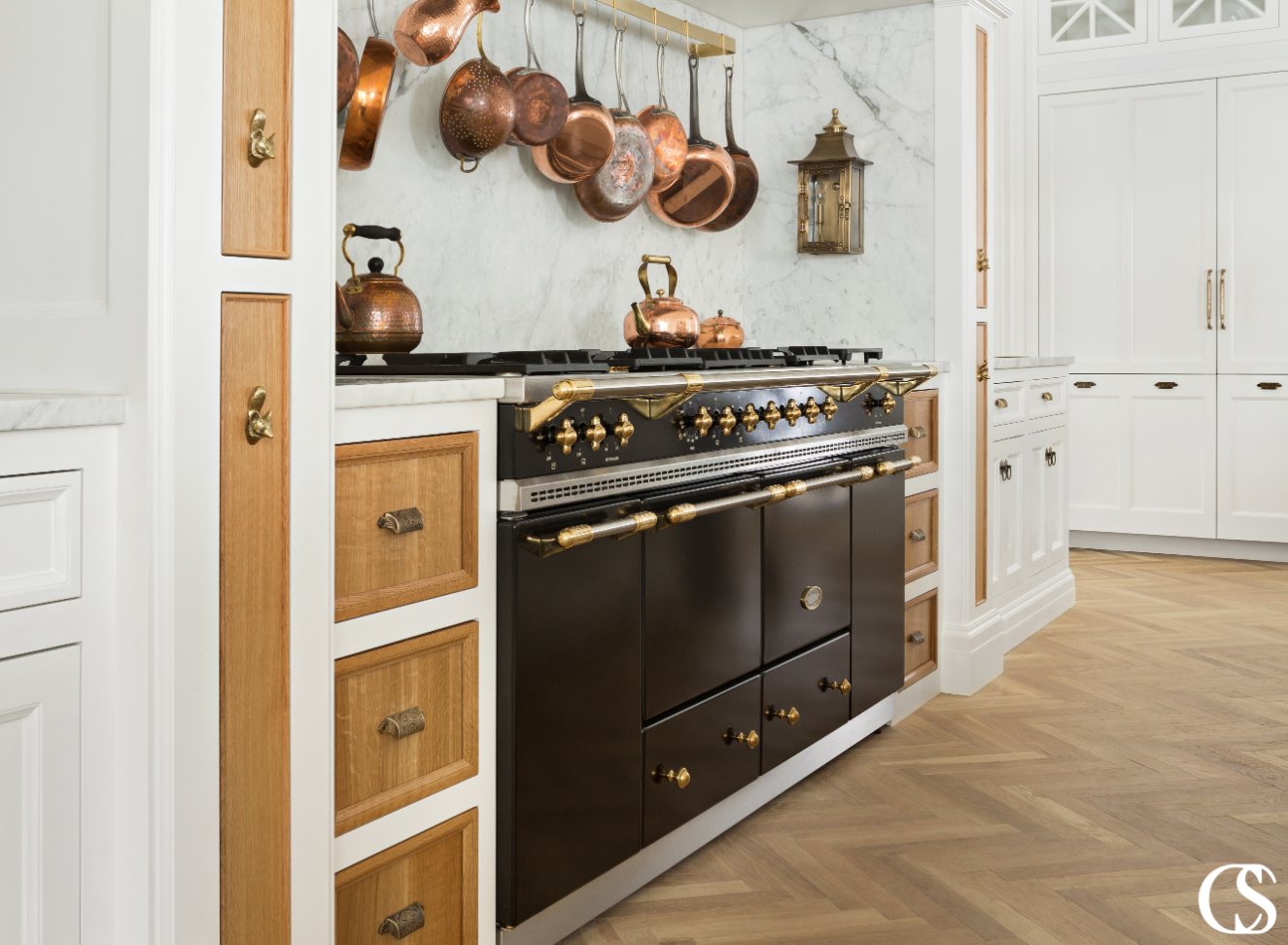Christopher Scott Cabinetry and Design is a Utah-based custom cabinetry, design, and remodeling company that pays incredible attention to all the little things, even down to the cabinet hinges and hardware. Maybe you’ve been so concerned with your cabinet style and hardware finishes that you haven’t given your cabinet hinges much thought. You’re probably not alone in this. Despite what you might think, cabinet hinges greatly impact your cabinetry’s look, feel, and functionality.
Understanding Different Types Of Cabinet Hinges
There are a myriad of different types of cabinet hinge types. However, the most common cabinet hinge styles are overlay and inset hinges.
Overlay Hinges
Overlay hinges are an excellent choice for many cabinets. They are placed outside the cabinet frame, partially covering the door. This type of hinge is easy to install and adjust, making it a popular option for various cabinet styles.
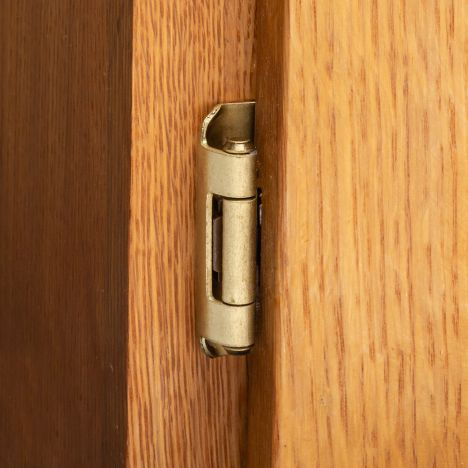
Inset Hinges
Inset hinges are concealed within the cabinet frame, allowing the doors to sit flush with the cabinet surface. These hinges provide a sleek and clean look but require precise installation for a perfect fit.
DISCOVER: Our Favorite Cabinet Hardware
Which hinge style is best? That, of course, will depend on your personal preference and the style of your cabinetry. Both types of hinges are functional and widely available.
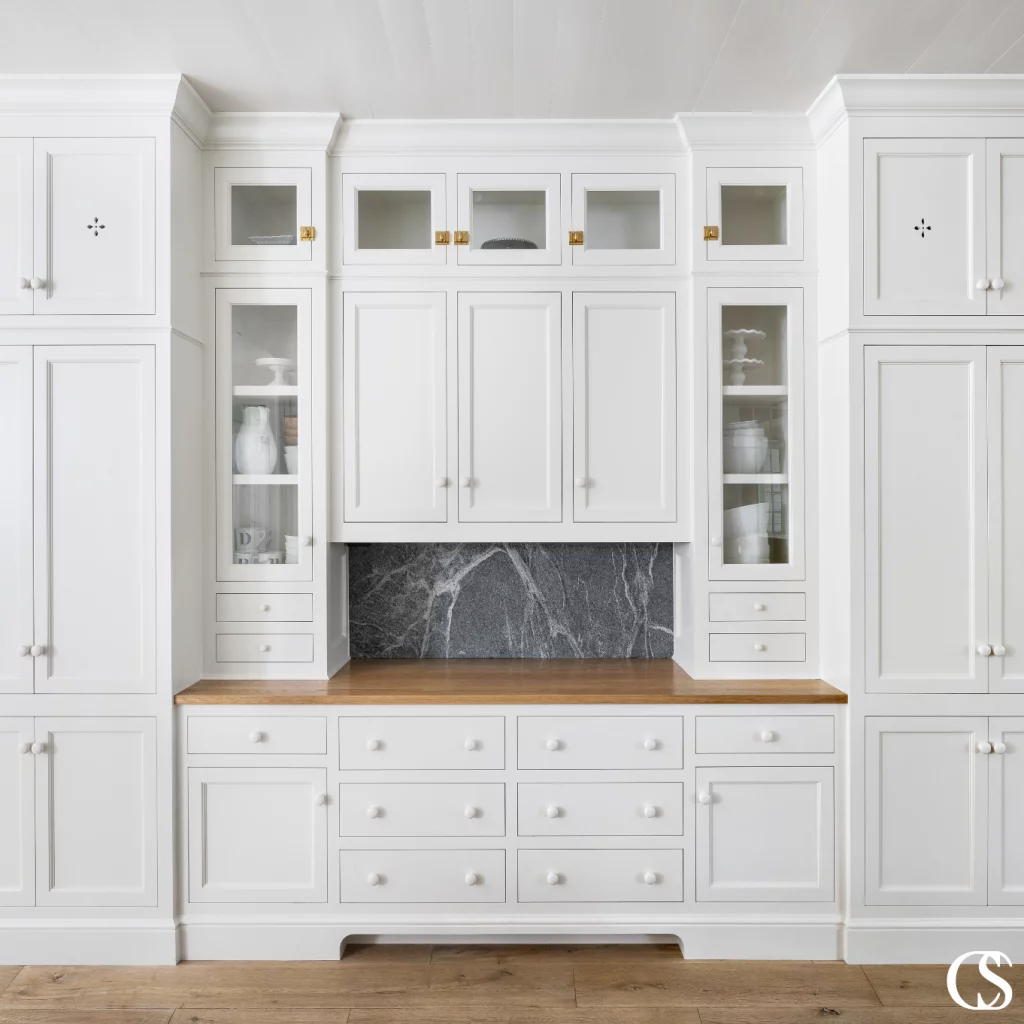
Exploring Hinge Styles And Options
Cabinet hinges come in a variety of styles and shapes. This guide briefly overviews some of the most popular hinge styles.
Concealed Hinges
Concealed hinges are a type of surface mount or European hinge that is designed for cabinets that do not have a face frame. These hinges are mounted directly to the inside of the cabinet door and the cabinet’s side panel. Surface mount hinges provide a clean and modern look since they are not visible from the outside when the doors are closed. They are commonly used in contemporary kitchen and bathroom cabinets and other types of furniture where a seamless appearance is desired.
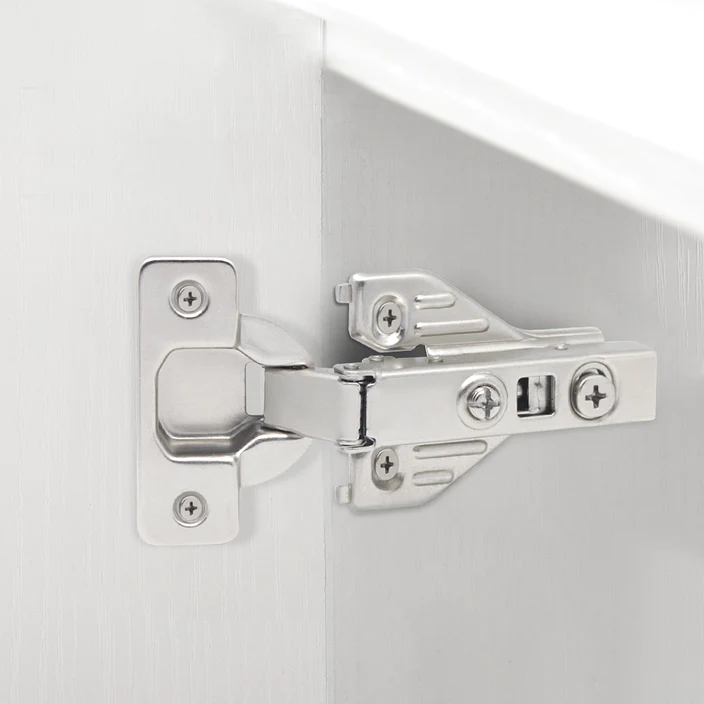
Soss Hinges
Soss hinges are innovative and discreet, known for creating a smooth, gap-free look. These hinges are ideal for high-end cabinetry and specialty doors.
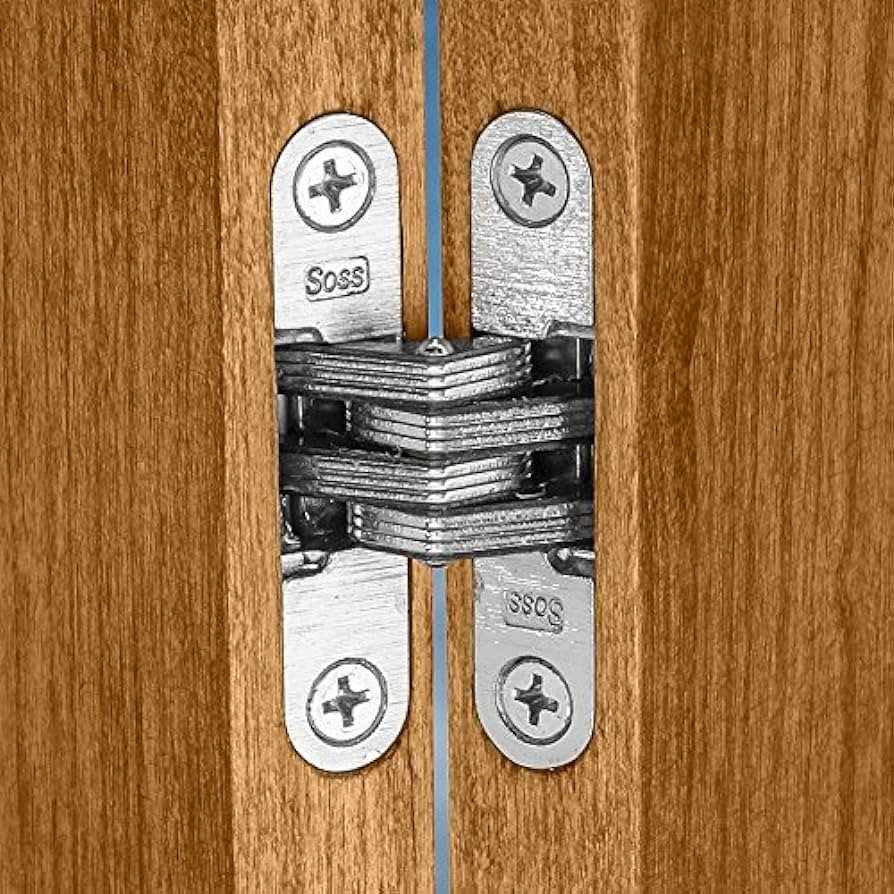
Pivot Hinges
Pivot hinges enable doors to swing both ways, making them suitable for unique cabinets, such as entertainment centers and bookshelves. They offer flexibility and a touch of contemporary style.
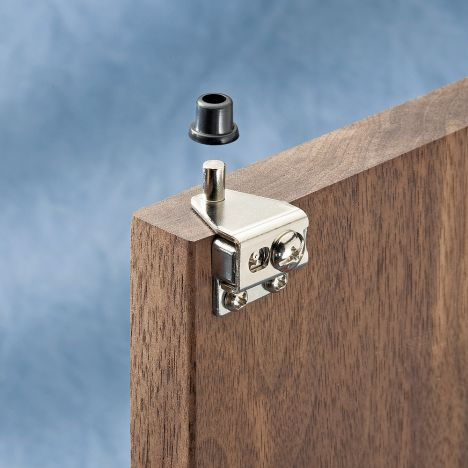
Decorative Hinges
Looking to add a touch of charm to your cabinets? Decorative hinges come in various ornate designs and finishes, enhancing the visual appeal of your cabinetry.
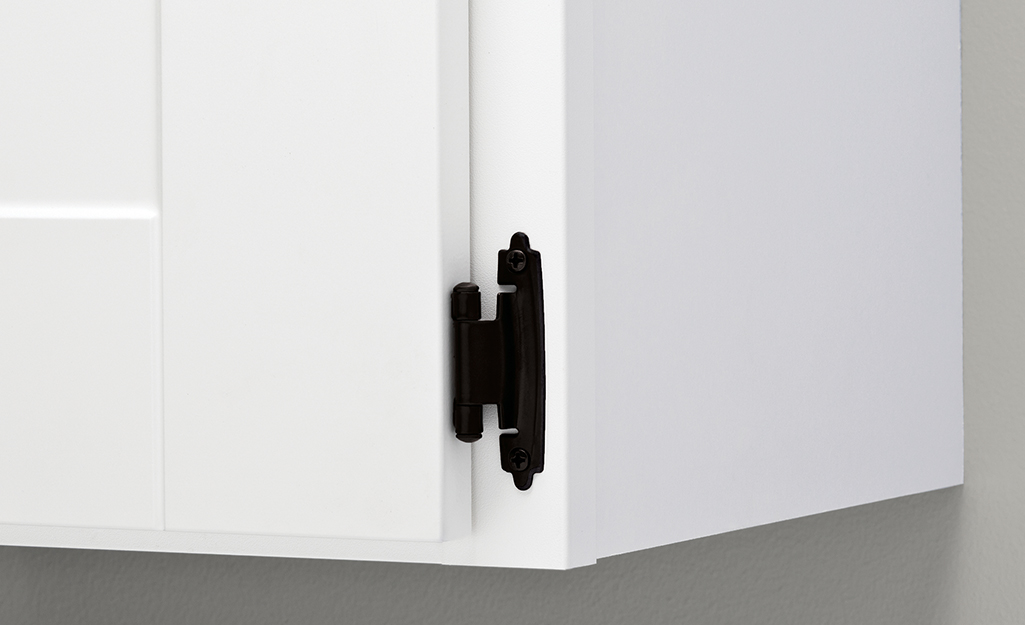
Additional Hinge Options
Besides overlay and inset hinges, there are quite a few hinge options available, and while we won’t cover those in detail here, below is a general overview of some other common hinges and their uses:
Mortise or Butt Hinges. Considered one of the most common hinge types, a mortise or butt hinge has a vertical pin between 2 plates of metal of the same size. They are used on many types of doors, including overlay, partial inset, and inset doors.
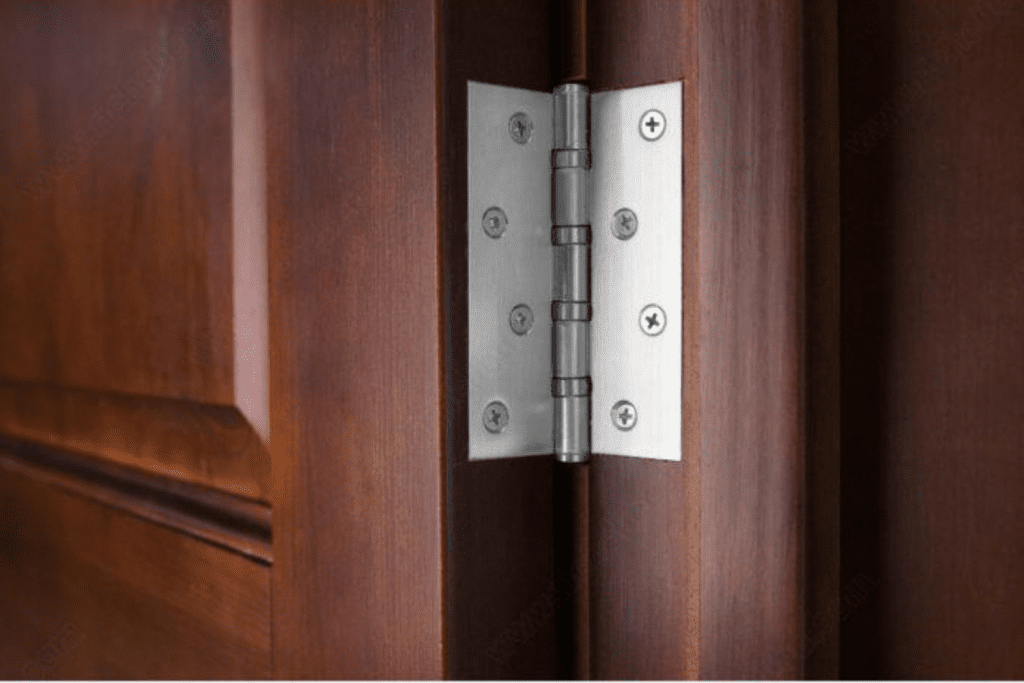
Full And Partial Wrap Hinges. Full wraparound hinges screw to the edge of the frame to wrap around three sides of the frame, are not adjustable, and are fully visible. Wrap-around hinges are commonly used in face frame cabinets, where the cabinet door has a partial overlay on the face frame. The visible part of the hinge adds a decorative element to the cabinet’s appearance.
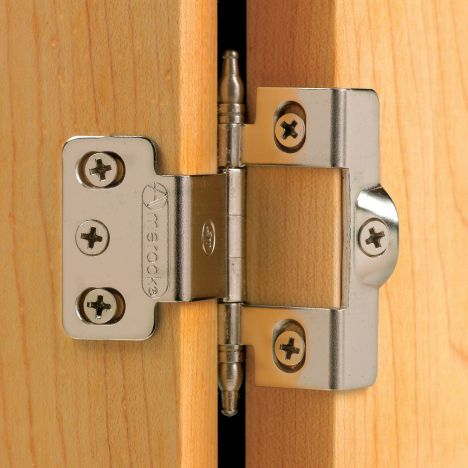
Soft Close Hinges. Soft close hinges are surface mount cabinets that close gently, no matter how much force is exerted to close the cabinet door. Soft close hinges require precise installation. For these types of hinges, hiring a professional to do the job right might make sense.
READ MORE: How To Install Cabinet Hardware
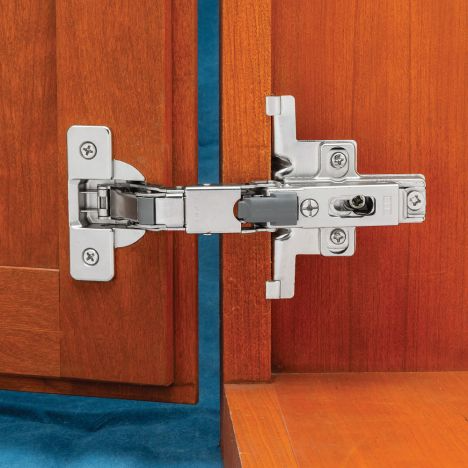
Choosing The Right Hinges For Your Cabinets
Choosing the right hinges for cabinets will depend largely on one thing: the style of your cabinet door. As is probably obvious at this point, there are many hinge types to choose from. This can be overwhelming, but the first step to choosing the right hinge size for your cabinet door will begin with how your cabinet door is constructed.
DISCOVER: Cabinet Handles, Knobs, And Pulls Types
Determining The Right Size Of Hinge
Step 1: Determine if cabinet doors are designed as inset or overlay
Overlay cabinet doors come in two styles: partial and full overlay. Full overlay cabinet doors cover the entire cabinet, opening completely when closed. Partial overlay cabinet doors will leave a portion of the cabinet face exposed. You can use face mount, flush mount, and full or partial wrap hinges on overlay cabinet doors.
Inset cabinet doors completely fill the cabinet opening and sit flush with the cabinet sides or face frames when closed. The best hinges for Inset doors are either butt hinges, surface mounted, or European hinges.
Step 2: Select the hinge size
Hinges come in all shapes and sizes. The most common hinge sizes for overlay and inset cabinet doors are ¼”, 3/8”, and ½.”
Step 3: Select hinge material, finish, and features
Hinges are made from stainless steel, brass, steel, and bronze. Finishes can be polished and plated. Features include rust resistance and self-closing or soft-closing cabinet hinge actions.
Cabinet Hinge Measuring Tips
Measure the size of your overlay cabinet in 2 easy steps:
- Apply a piece of tape to the cabinet frame on the hinged side of the door so that it is even with the edge of the door.
- Open the cabinet door and measure from the edge of the tape (inside edge) to the edge of the opening of the cabinet. This is the overlay.
Measure the size of your inset cabinet in 2 easy steps:
- With the door closed, part of the thickness of the door fits inside the opening of the cabinet and is called the inset.
- The inset is measured on the edge of the door. Possible inset dimensions include 3/8″, 1/2″, 5/8″ and 3/4″.
Soft-Closing Functionality
The soft-close cabinet hinge has picked up steam recently, and it’s not hard to understand why. Soft-close hinges offer several advantages: noise reduction, safety (no pinched fingers!), and enhanced cabinet door longevity. Not to mention they are aesthetically pleasing, smooth, and easy to operate.
Considerations When Using Soft-Close Hinges:
Installation And Adjustment
Soft-close hinges may require more precise installation compared to regular hinges. Proper alignment is essential for optimal performance.
Cost
Soft-close hinges are generally more expensive than traditional hinges. However, their noise reduction, safety, and hardware longevity benefits can justify the additional cost.
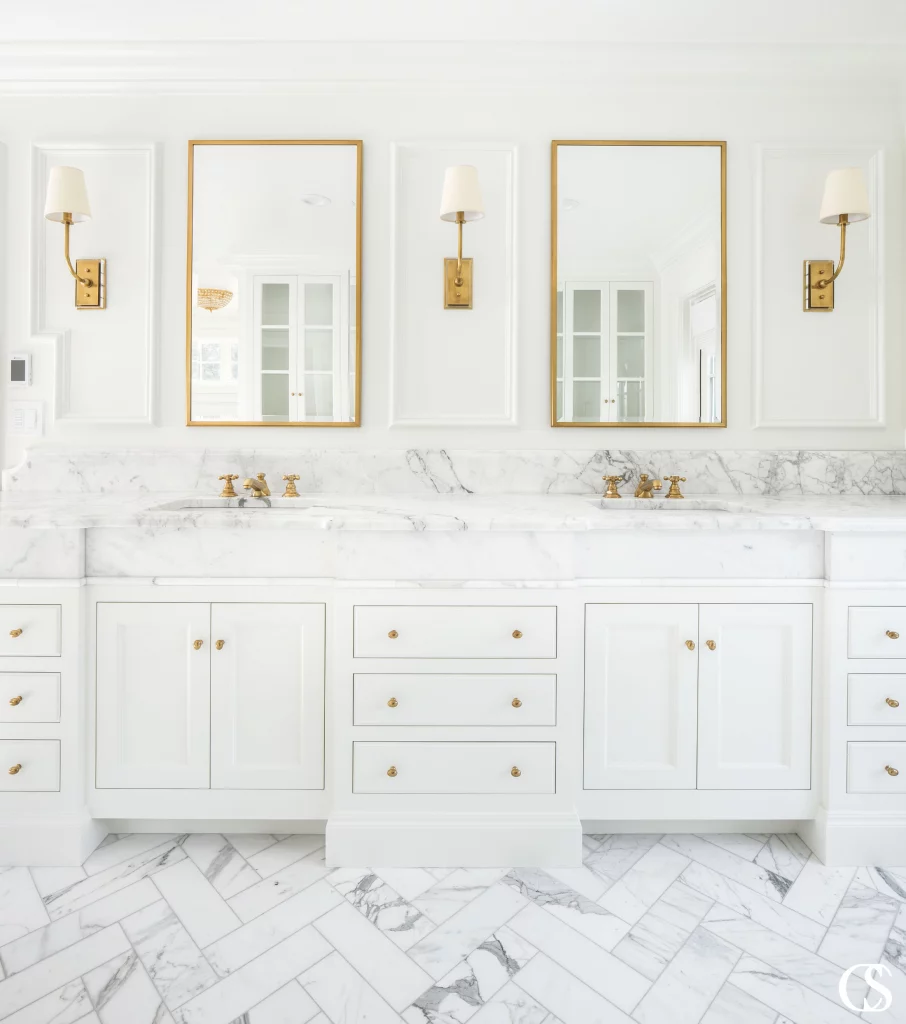
Hinge Installation And Adjustment
Your cabinet doors get non-stop use, so it should be no surprise that after years of good use, they may need some attention.
Adjusting Cabinet Hinges For Proper Alignment
The two most common issues with misaligned cabinet doors stem from misalignment of the hinge or damage to the door.
Step 1: Look over the cabinet door
Look over each part of the cabinet door, inside and out. Open and close the door several times to see if it rubs or catches. This will help you determine if the cabinet misalignment concerns the door or the hinge. If the door is damaged, you’ll need to replace it. If it doesn’t close or overlap due to swelling in a humid climate, you must sand the edges and refinish it for a perfect fit.
Step 2: Inspect the hinges
If the door is in good shape, inspect the hinge. Look for loose screws or worn hinge pins to see if that may be causing the issue. Most misalignment issues can be solved by adjusting the screws on the hinge.
Step 3 Adjust your hinges
Most hinges allow for adjustments in two directions–left/right and up/down. To slightly loosen the screws on the hinge’s mounting plate to adjust your hinge from left to right. With the screws slightly loose, you can move the door in the desired direction. For example, if you want to move the door to the left, push the door slightly to the left. Once you’re satisfied with the door’s position, tighten the adjustment screws on the mounting plate. Ensure they are snug but not overly tight.
To adjust your cabinet hinge up and down, slightly unscrew the base plate the hinge locks into and move the doors until they’re level at the top and bottom. To bring the cabinets closer or further to the cabinet box, use the hinge screw farthest from the doors (the one not used for left/right). Remember that while most hinges are adjustable, no hinge is immortal. All hinges wear down with time and use until they eventually require replacement.
Tips For Successful Hinge Installation
Proper installation is crucial for your doors and cabinets’ long-term functionality and durability. Taking your time and following these tips will help you achieve a successful hinge installation.
Important considerations before starting the installation process:
- Choose the right hinges. Hinges come in various types, such as butt hinges, concealed hinges, and European hinges. Select the appropriate hinge type based on your cabinet construction, weight, and size of the cabinet door.
- Gather the necessary tools: You’ll need a tape measure, pencil, screwdriver (manual or powered), drill, drill bits, and screws. Having the right tools will make the installation process much smoother.
Best practices and tips for proper hinge installation:
Mark hinge locations accurately. Measure and mark the hinge locations on both the door and the frame. Use a square to ensure the marks are perpendicular to the door or cabinet edge.
Pre-drill pilot holes. Pre-drilling pilot holes for the screws are essential to prevent wood from splitting. Use a drill bit smaller than the size of the screws you’re using.
Test-fit before final installation. Before fully securing the hinges, do a test-fit to ensure they align properly and the door opens and closes smoothly without rubbing or binding.
Check for level and plumb. Ensure the door or cabinet is level and plumb during the installation. Use shims if needed to achieve the correct alignment.
Use the right number of hinges. For most standard doors, two hinges are sufficient, but heavier doors may require three or more. For tall cabinets, consider using three hinges to provide better support.
Pay attention to hinge clearance. Make sure there’s enough clearance between the door and the adjacent surfaces (walls or other doors) to allow for smooth movement.
Use quality screws. Invest in good quality screws appropriate for the material you’re working with (wood, metal, etc.). Low-quality screws can strip easily, leading to hinge failure.
Adjustability. Using adjustability features, such as concealed or European hinges, take advantage of these adjustments to fine-tune the door position and alignment.
Check for even gaps. Once the hinges are installed, check for even gaps around the door or cabinet to ensure a professional finish.
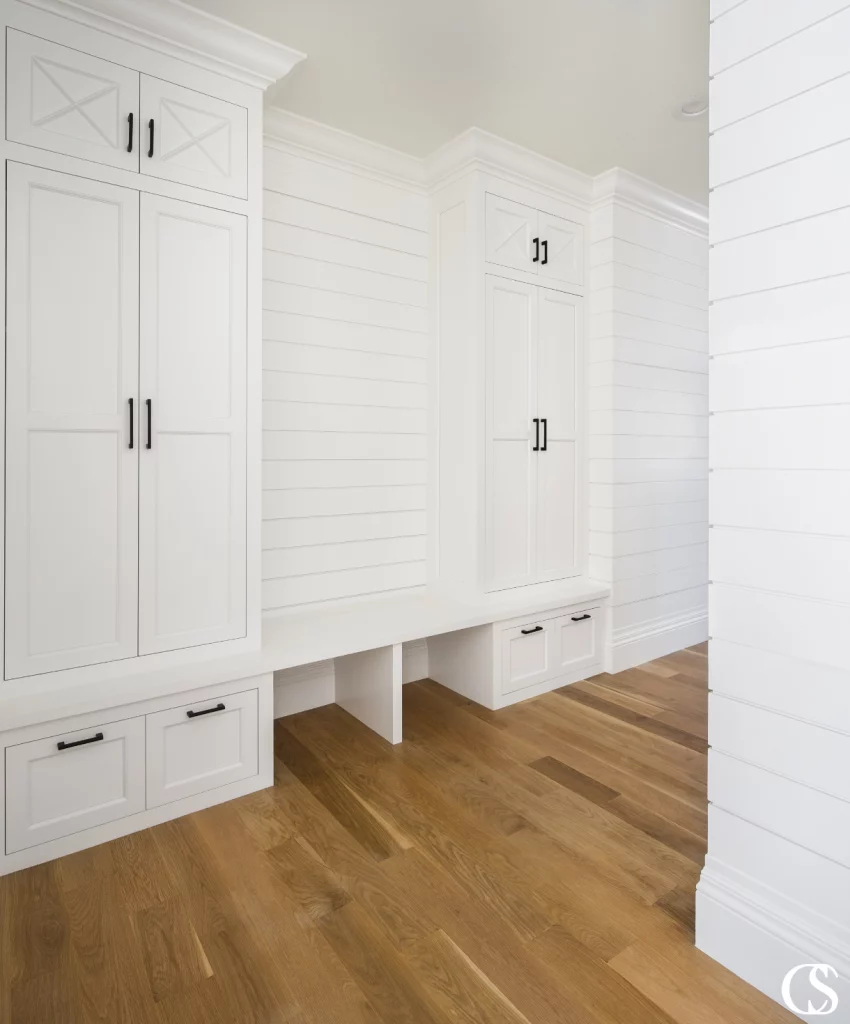
FAQs For Cabinet Hinges Types And Styles
Can I switch from overlay hinges to inset hinges on existing cabinet doors?
Yes! Overlay hinges can be easily changed to inset hinges, especially if you’re dealing with a standard door size and hinge location.
Are there hinges that allow for soft-closing functionality?
Soft-close hinges have a hydraulic mechanism that makes the door close gently and silently. If your hinge is not soft close by nature, this feature can be easily added to any hinge.
How do I adjust cabinet hinges if my doors are not aligned properly?
Look for the horizontal adjustment screw located closest to the cabinet front. Turning the screw clockwise will move the door closer to the middle of the cabinet. Turning the screw counterclockwise will result in the door moving further from the middle.
Can I mix different types of hinges on the same cabinet?
The type of hinge you use will be largely determined by what type of cabinet style, door type, and overlay dimension your cabinet doors and drawers have. If you have a combination of full overlay and inset cabinet doors, you must select hinges suitable for each door type.
Are pivot hinges suitable for all types of cabinet doors?
Pivot hinges pivot around a point rather than along a longer hinge pin. Pivot hinges can be used for inset, overlay, and partial inset doors.
Can decorative hinges be functional as well as aesthetically pleasing?
Of course! Decorative hinges are very functional, and their visual design can add character and depth to your overall design theme.
What are some considerations for selecting hinges for heavy cabinet doors?
There are a few basic rules, such as taller hinges will add more stability, and taller, heavier doors need more hinges. For example, a 60-inch-tall door needs two hinges. A door measuring 60 inches to 90 inches needs three hinges.
How do I maintain and care for cabinet hinges?
Wipe the hinges with a dry and soft cloth. Tighten the screws, and adjust and lubricate the hinges regularly.
What are some common hinge installation mistakes to avoid?
Using too small of a screw can lead to movement that will damage the door and hinges over time. Over-tightening screws can also cause damage to your screws over long periods.
Shop Tradition Hardware By Christopher Scott
We take enormous pride in designing and custom-building some of the most functional and beautiful hardware on the market. When you work with Christopher Scott Cabinetry, you discover hardware built to complement your cabinets flawlessly. Because Chris believes that elegant hardware belongs in every home, Tradition Hardware features elegant, high-quality, modestly-priced, and timelessly-designed hardware pieces that complement any design aesthetic. Because this is so important to us, Tradition Hardware features simple, elegant cabinet hardware that is expertly designed and reliably manufactured with top-quality materials.
So, if you want to update your cabinet hardware in your bathroom or kitchen and want quality design and construction, visit our online shop to see what exceptional craftsmanship looks like.

